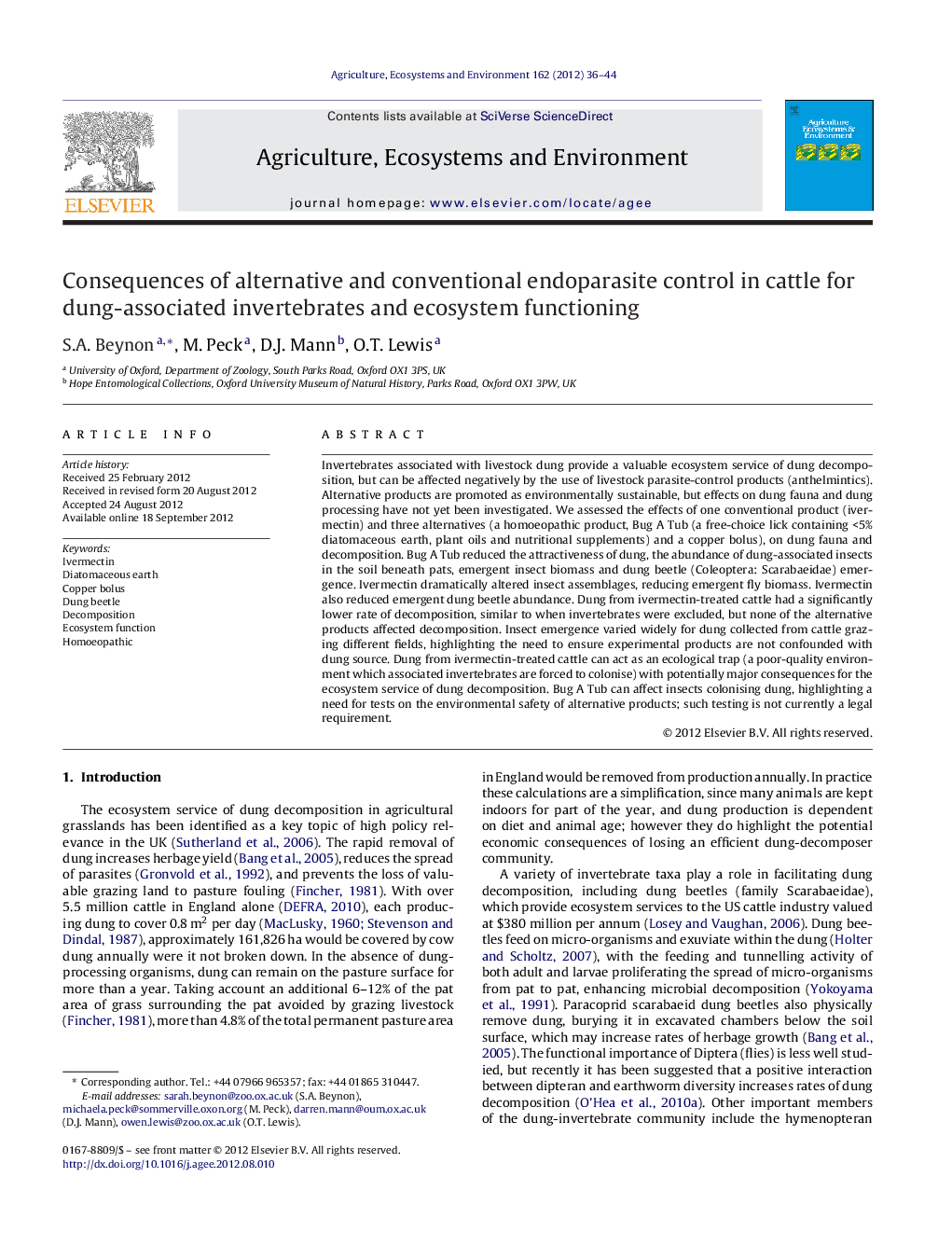| Article ID | Journal | Published Year | Pages | File Type |
|---|---|---|---|---|
| 2414383 | Agriculture, Ecosystems & Environment | 2012 | 9 Pages |
Invertebrates associated with livestock dung provide a valuable ecosystem service of dung decomposition, but can be affected negatively by the use of livestock parasite-control products (anthelmintics). Alternative products are promoted as environmentally sustainable, but effects on dung fauna and dung processing have not yet been investigated. We assessed the effects of one conventional product (ivermectin) and three alternatives (a homoeopathic product, Bug A Tub (a free-choice lick containing <5% diatomaceous earth, plant oils and nutritional supplements) and a copper bolus), on dung fauna and decomposition. Bug A Tub reduced the attractiveness of dung, the abundance of dung-associated insects in the soil beneath pats, emergent insect biomass and dung beetle (Coleoptera: Scarabaeidae) emergence. Ivermectin dramatically altered insect assemblages, reducing emergent fly biomass. Ivermectin also reduced emergent dung beetle abundance. Dung from ivermectin-treated cattle had a significantly lower rate of decomposition, similar to when invertebrates were excluded, but none of the alternative products affected decomposition. Insect emergence varied widely for dung collected from cattle grazing different fields, highlighting the need to ensure experimental products are not confounded with dung source. Dung from ivermectin-treated cattle can act as an ecological trap (a poor-quality environment which associated invertebrates are forced to colonise) with potentially major consequences for the ecosystem service of dung decomposition. Bug A Tub can affect insects colonising dung, highlighting a need for tests on the environmental safety of alternative products; such testing is not currently a legal requirement.
► Non-target impacts of conventional and alternative livestock parasite control. ► Bug A Tub reduced biomass of flies attracted to dung by 83%. ► Bug A Tub reduced the biomass of insects emerging from dung by 42%. ► Ivermectin reduced emergent flies by 99% and rates of dung decomposition by 42%. ► Confounding dung collection site and treatment may generate spurious results.
